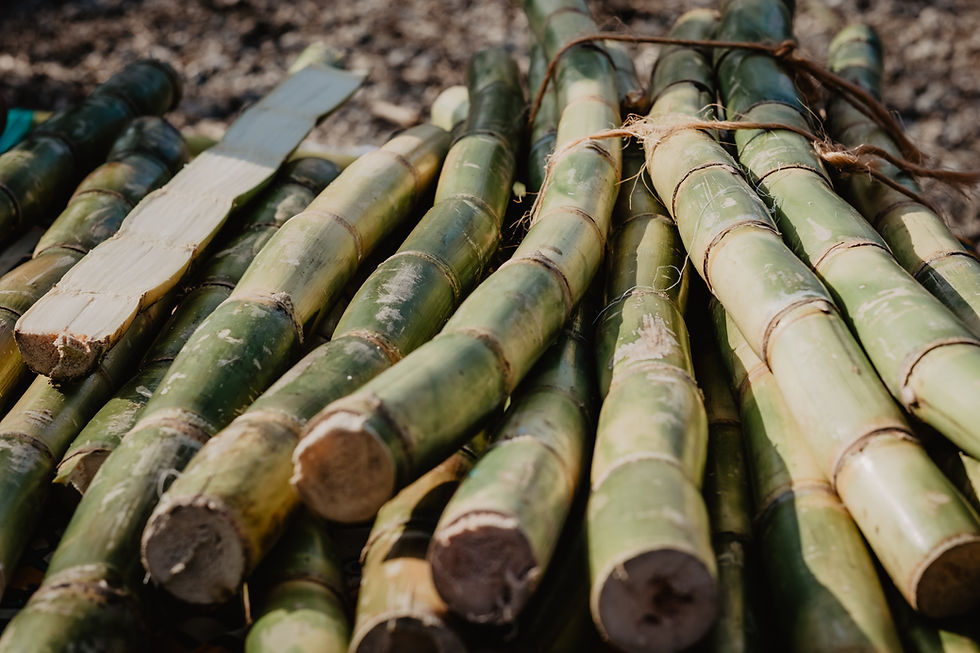Classic Daiquiri or Canchanchara?
- Israel Meléndez Ayala
- Nov 13, 2020
- 3 min read
Colonial narratives shape how ownership is credited in postcolonial spaces. This is part of a 2-part series on the colonial narrative of Rum. Rum: History and Myths can be read here.
"Kill-Devil," "aguardiente"—these were some of the names the spirit we know as “rum” was called before it was baptized as “rum” by the colonists, not its creators. Its creators were alchemists and enslaved people from Africa in the early days of colonisation in the Americas. Enslaved sugar plantation laborers discovered that molasses, a byproduct of sugar production, could be fermented and distilled into a spirit.
The beverage is synonymous with the Caribbean, where much of the world’s rum is produced and where advertisers have set its narrative. Formerly the drink of workers, enslaved people, pirates and sailors for its low cost, rum has become a symbol of party, vacation, and escape. This transformation is shown at cocktail bars and hotels in Havana, San Juan, Santo Domingo, among others where daiquiris that were once served in wooden glasses now come in elegant coupes.
The invention of the daiquiri is credited to American engineer Jenning Cox, but he is only the first person to write the recipe down on paper. “Daiquiri” as a word finds its origins in the language of the Caribbean’s indigenous Taíno people and is the name of a village in Cuba where U.S. troops landed during the Spanish-American War in 1898.
U.S. occupation in Cuba saw an exploitation of the sugar industry on the island. Producing it in Cuba and refined in the US since the Platt Amendment in 1901 which legally dictated the control of all the sugar plantations in Cuba. The finished product was sold back to Cubans at a high cost. When Cubans intervened against the exploitative sugar business the US intervened militarily against them, as was the case in 1906, 1912 and 1917-22. Under colonial rule products like Cuban rum were viewed as property of the coloniser. Though Cuba has an abundance of the three ingredients in a classic daiquiri: citrus, sugar and rum, under colonisation anything produced by Cubans was subject to imperial greed. No wonder Cox is credited for a drink that is clearly Cuban.
Rafael Reyes, Caribbean Diageo ambassador and a World Class Bartender 2011 originally from Cuba, says, “My theory is that it [the daiquiri] comes from canchanchara (lemon, honey and aguardiente), a recipe consumed by the mambises (liberating army), way before the Americans came to Cuba as a remedy for colds and ailments. Today, grandmothers still use it as a remedy.” The only change in the daiquiri we know today was a substitution of sugar in place of honey.
Classic Daiquiri 2 oz Rum 3/4oz Lemon juice or 1 oz 3/4oz Simple Syrup or 1oz Shake with ice Strain and serve up in a coupe Glass Lime wheel for garnish
This cocktail continues to delight millions of palates worldwide and its simplicity makes it versatile to adaptations such as Papa Doble, Passion Fruit Daiquiri, Banana Daiquiri etc. My favorite alteration was a recipe created by Carlos Padial (Charlie) when we worked at ViNO, one of the bars of the Puerto Rican cocktail bar La Factoria. Carlos called it “San Pedrito”:
San Pedrito 2 oz Don Q XO 1 oz Lemon Juice ½ oz PX sherry Angostura bitters ¼ oz cinnamon Simple syrup Shake with ice Strain and serve up in a coupe glass Lime wheel for garnish
This cocktail has a complexity of oaky notes, citrus, cinnamon with a balancing aftertaste of nuts and raisins from the PX Sherry.











